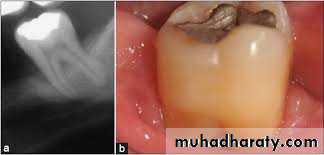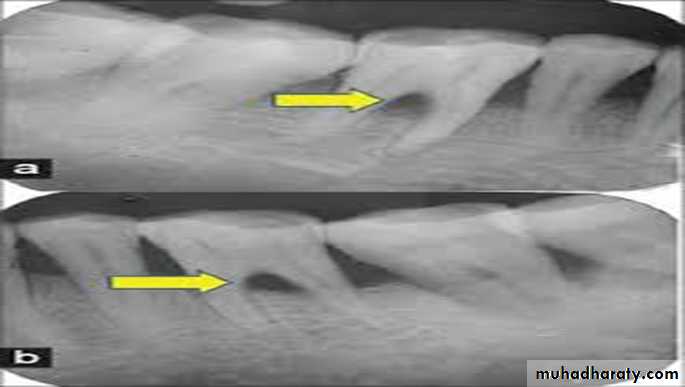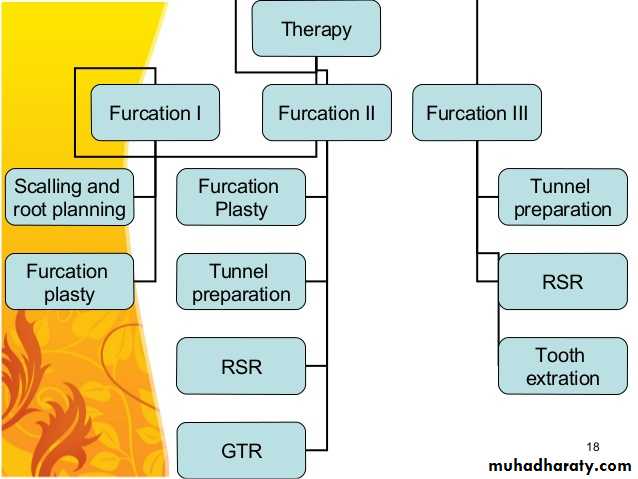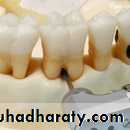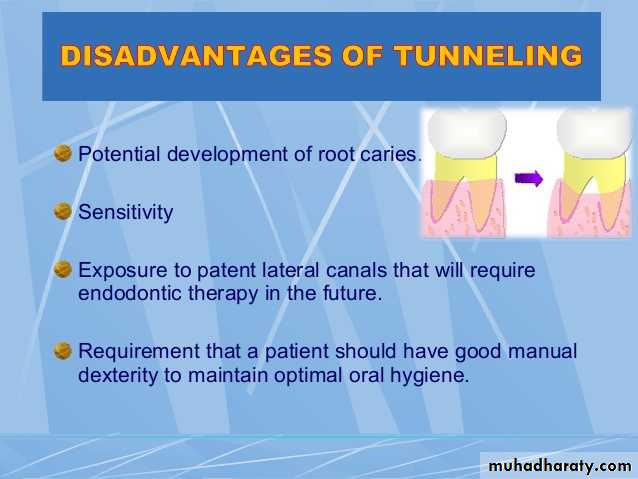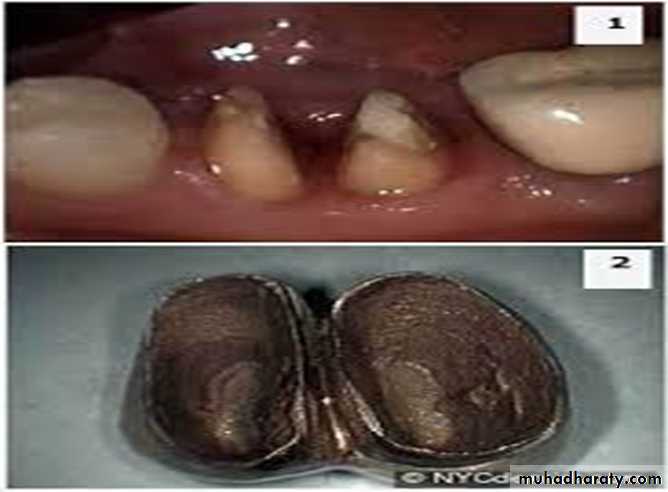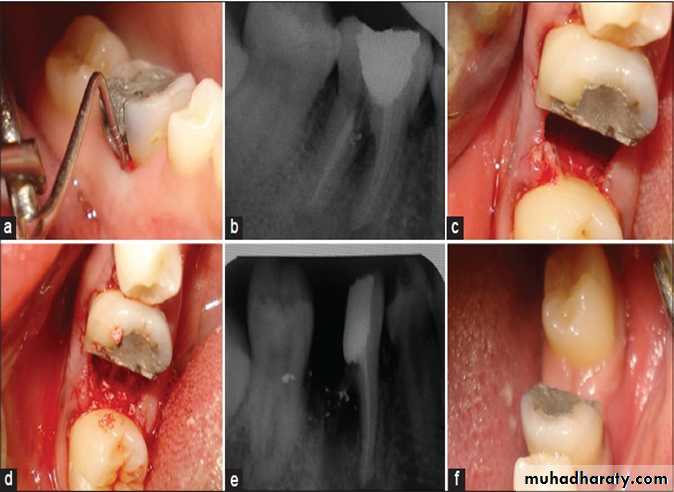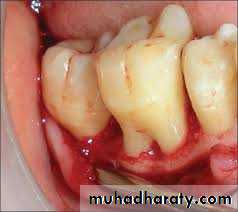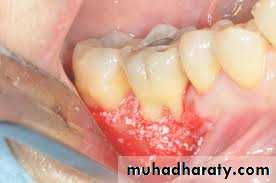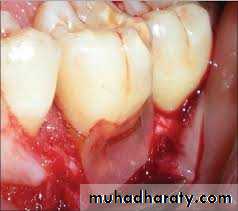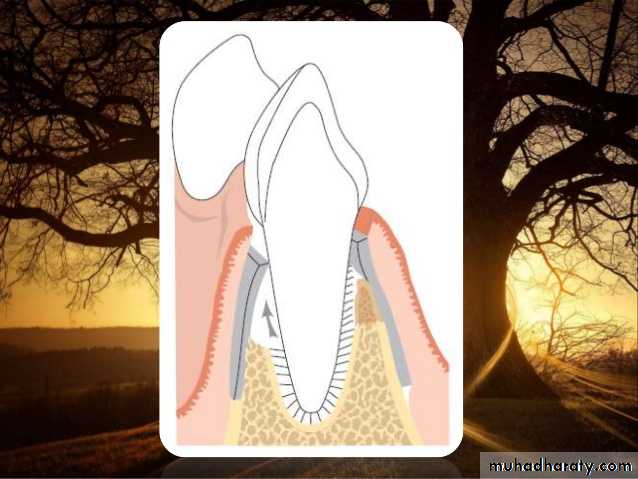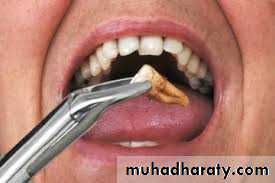Furcation involvement
Furcation involvementThe term furcation involvement refers to the involvement of bifurcation or trifurcation of the multirooted teeth by the periodontal diseases.
Terminology
root complex is the portion of tooth that is located apical to (CEJ).Terminology
Furcation involvementHamp et al. classify the furcation involvement as follow:
Degree I: not exceed one third of the width of the tooth
Degree II: exceed one third of width of the tooth
Degree III: through and through
Diagnosis of the furcation involvement
Clinical examinationCareful Probing
• Radiograph
PeriapicalBite-wings
Radiographs must always be obtained to confirm findings made during probing of a furcation-involved tooth.
the location of the interdental bone as well as the bone level within the root complex should be examined
it possible for furcation involvement to be present without detectable radiographic changes.
the localized but extensive attachment loss which may be detected within the root complex of a maxillary molar with the use of a probe will not always appear in the radiograph. This may be due to the superimposition in the radiograph of the palatal root of remaining bone
structure.
Therapy of furcation involvement
The treatment is intended to meet two objectives:• The elimination of microbial plaque from the exposed surfaces of the root complex.
• The establishment of an anatomy of the affected surfaces so that it facilitates proper self performed plaque control.
Therapy of furcation involvement
• Examination
Tooth vitality
((( if non vital endodontic treatment precede the periodontal treatment )))
Tooth mobility
((( occlosal adjustment should precede the periodontal treatment )))
• Rational therapy of furcation involvement
• Degree1 :- scaling and root planning , furcation plasty.• Degree2:-furcation plasty
Tunnel preparation
Root resection
Tooth extraction
GTR
• Degree3:-tunnel preparation
Root resection
Tooth extraction
Furcation plasty
Include the following procedures:-Reflection of mucoperiosteal flap to get better access to the interradicular area.
Removal of soft and hard bacterial deposits and inflammatory soft tissue from furcation area.
Odontoplasty i.e removal of tooth substance in the furcation area in order to widen an arrow entrance of the furcas.
Osteoplasty :i.e recontouring of bony defect in the furcation area.
Repositioning and suturing of the flap
• Tunnel preparation
• used in degree II ,III(long and divergent roots)• following tissue resection, enough space has been established to be used during self plaque control
• The flap apically positioned
• The exposed root should be treated by topical chlorhexidine.
• Root separation and resection
Root seperation sectioning of root complex and maintenance of all rootsRoot resection sectioning and remove
of one or two roots in multirooted tooth
RSR used in grade II,III
Indications
Regeneration of furcation defect
• Extraction
When the attachment loss is so extensive.When the treatment will not result in a tooth/gingival anatomy which allow self plaque-control measures.
When the maintenance or affected tooth will not improve the treatment plan.
When preservation of the affected tooth will represent a risk factor for long term prognosis.







